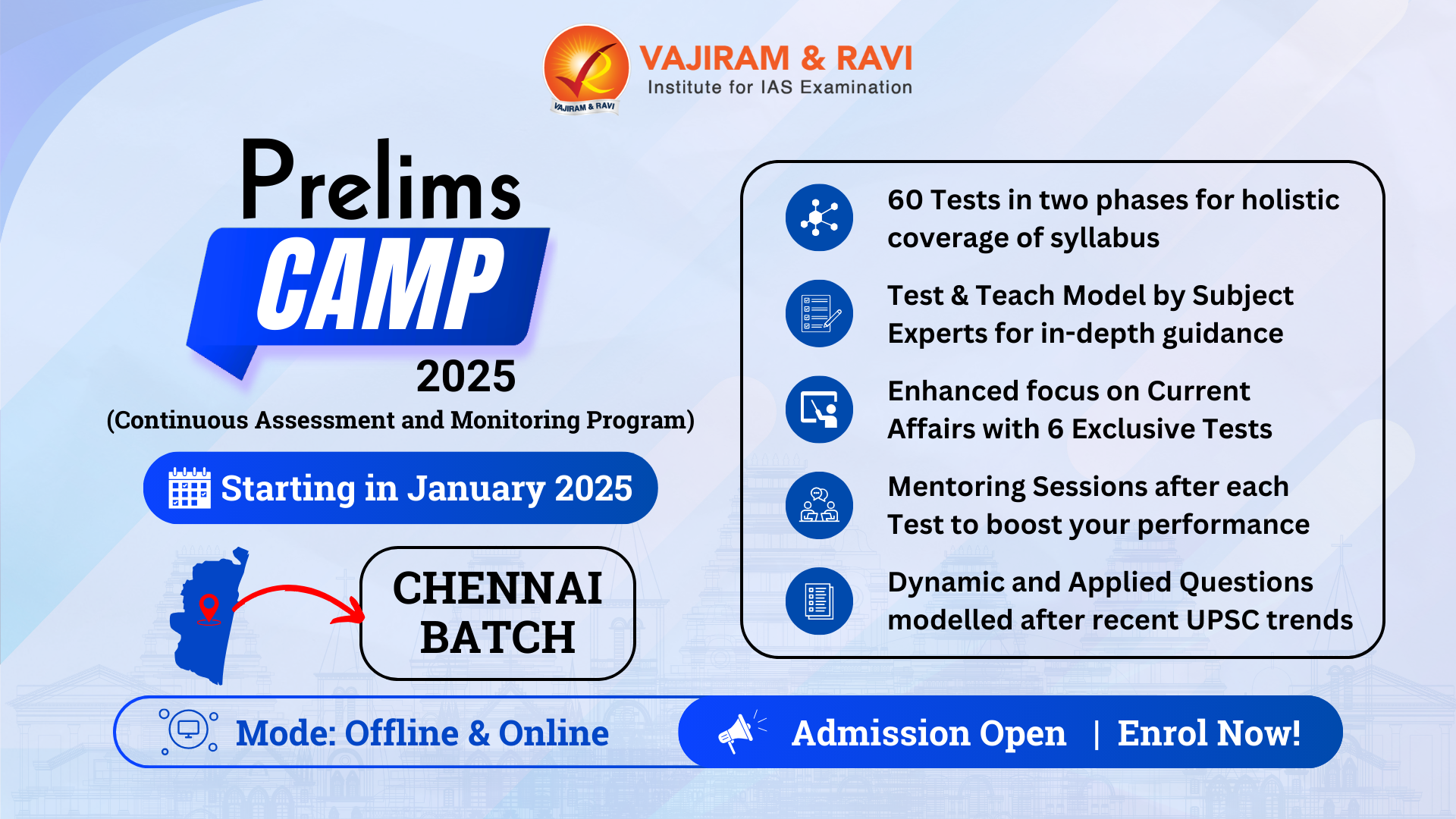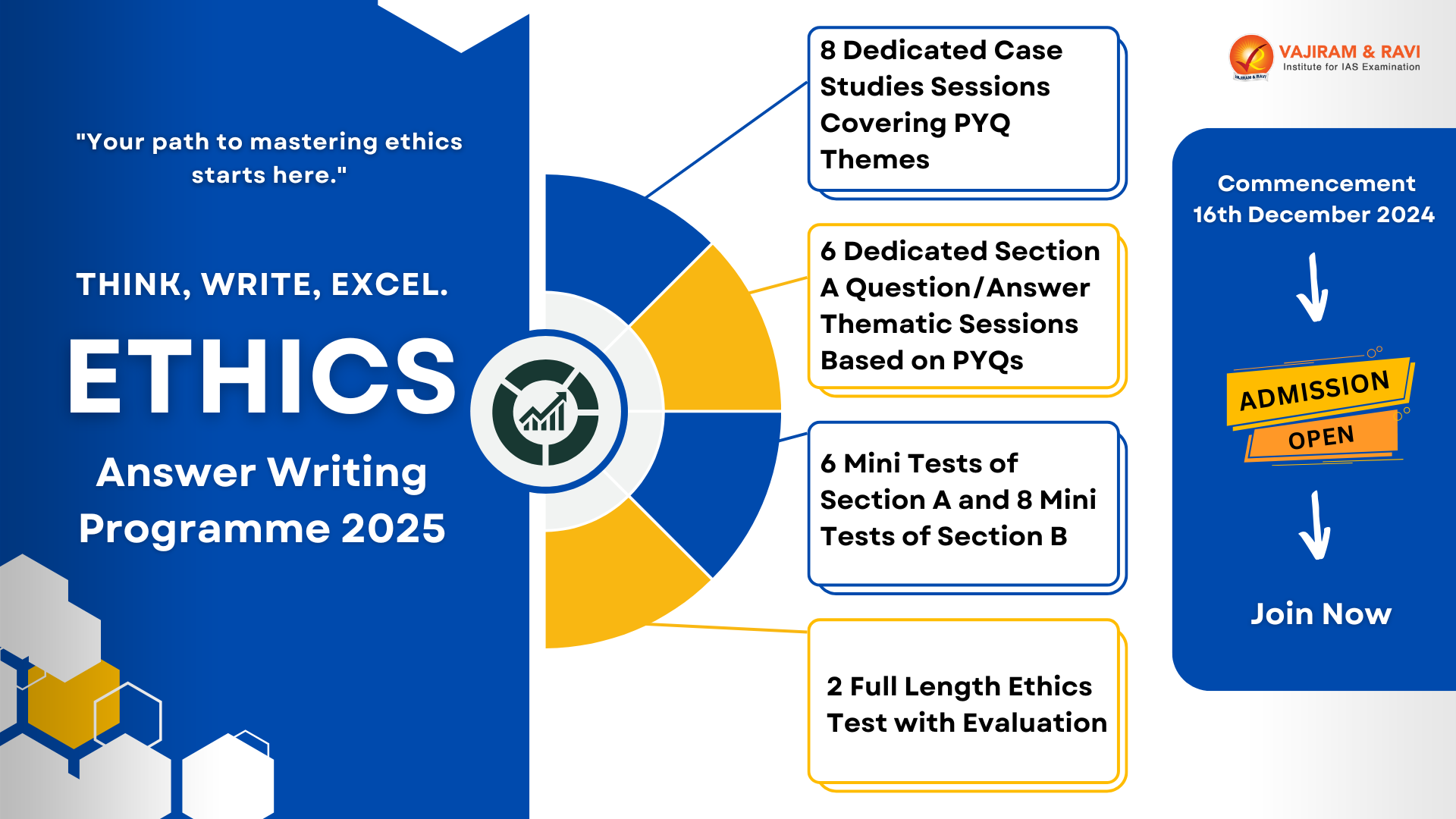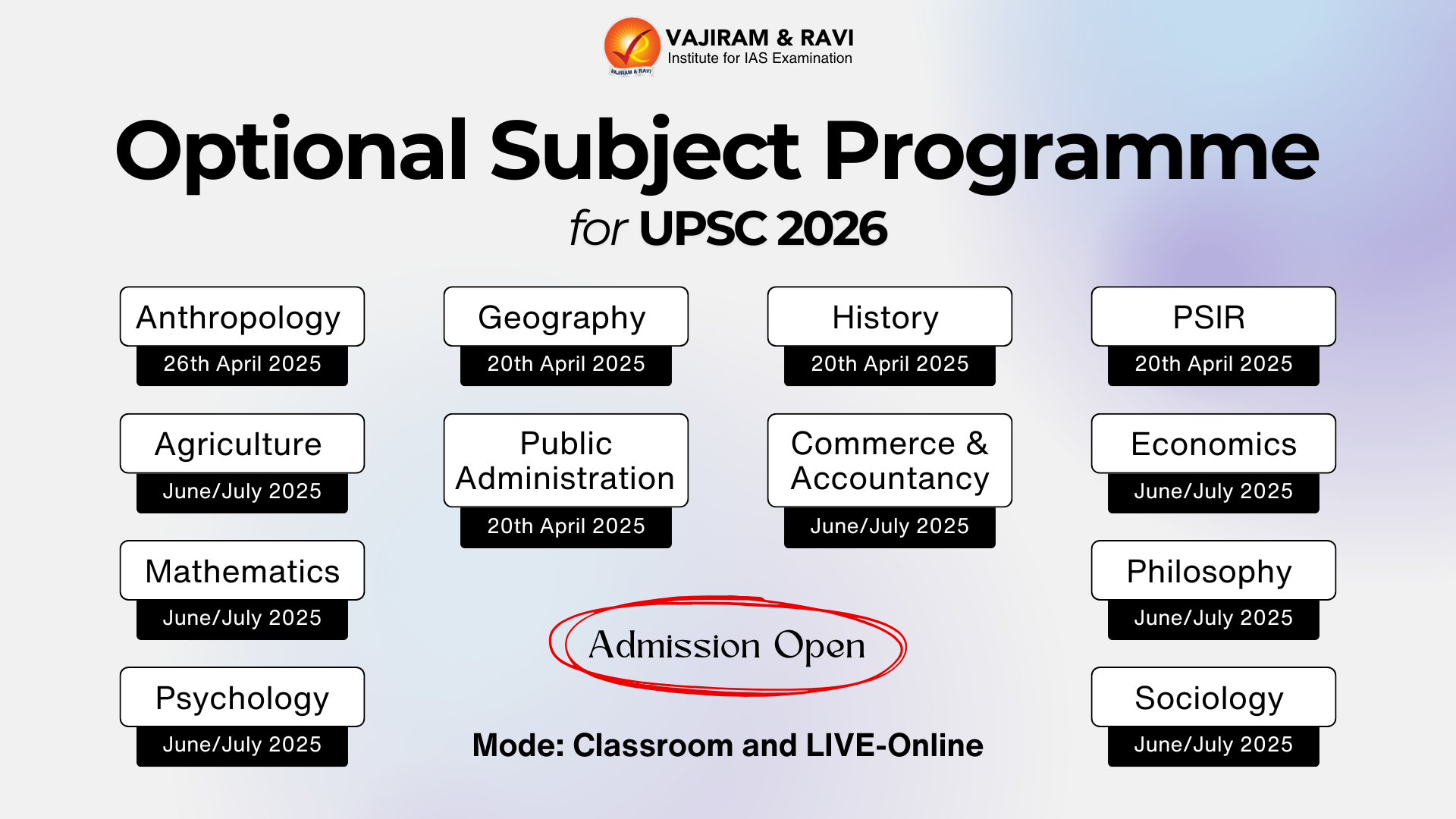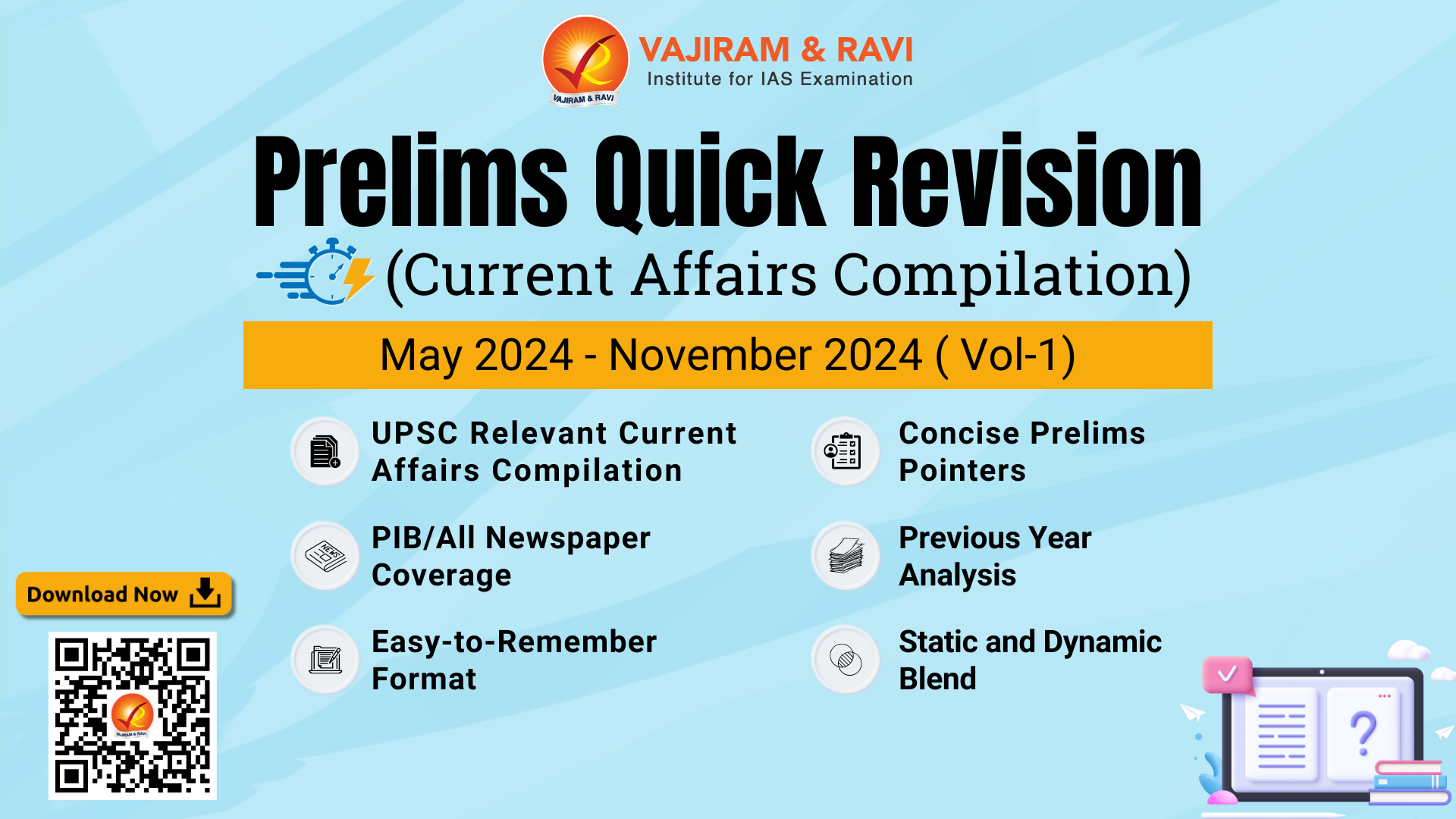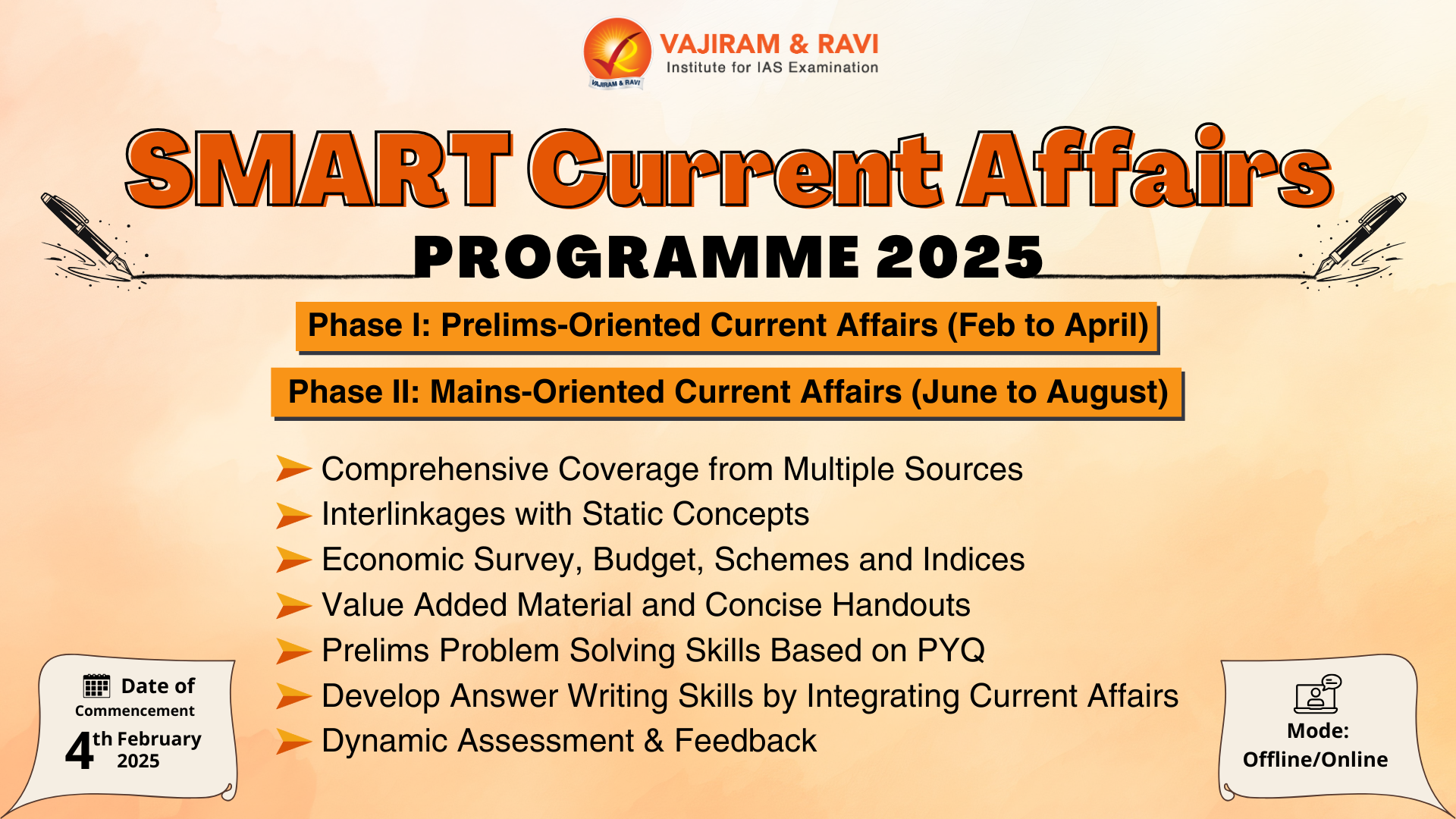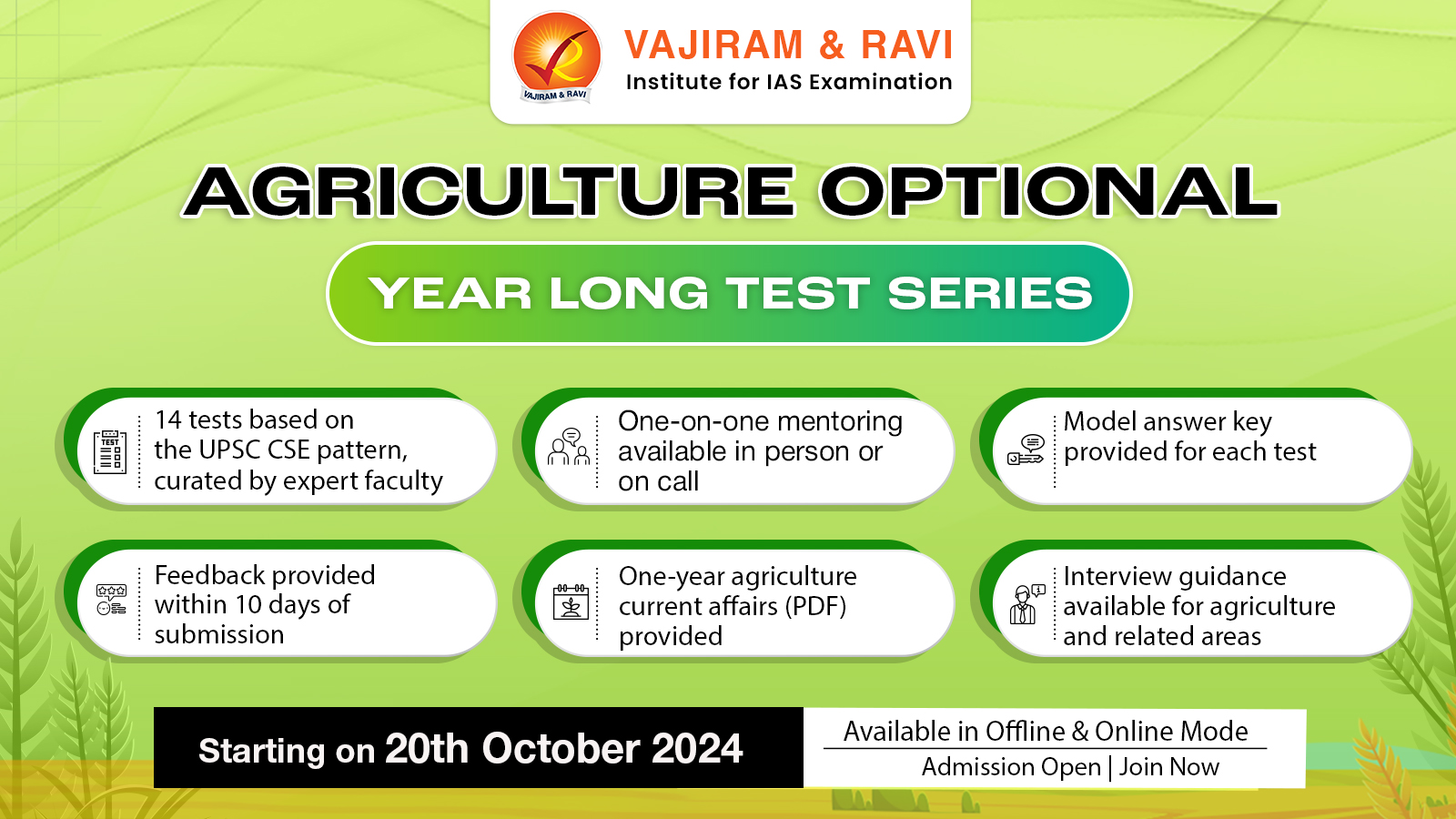Upcoming Mentoring Sessions
RMS - Economy 6 - Balance of Payment
RMS - Geography 1 - Geomorphic Processes
RMS - Polity 5 - Constitutional & Non-Constitutional Bodies
Mentoring Session - UPSC Form Filling
RMS - Economy 5 - Financial Markets
RMS - Polity 4 - Fundamental Rights - P3
RMS - Economy 4 - Fiscal Policy and Budgeting
RMS - History 2 - From 1765 to 1858 - P2
RMS - Polity 4 - Fundamental Rights - P2
RMS - Economy 3 - Taxation
RMS - Polity 4 - Fundamental Rights-P1
RMS - History 1 - European Penetration to Battle of Buxar
RMS - Economy 2 - Money & Banking - P2
Mentoring Session (2024 - 25) - How to Write an ESSAY?
Social Issues Doubts and Mentoring Session
Ethics & Essay Doubts and Mentoring Session
Geography & Environment Doubts and Mentoring Session
History Doubts and Mentoring Session
Economy & Agriculture Doubts and Mentoring Session
Online Orientation Session
How to Read Newspaper and Make Notes?
Mains Support Programme 2024-(2)
Mains Support Programme 2024- (1)
Polity & International Relations Doubts and Mentoring Session
Mentoring Sessions (2024-25) - How to DO REVISION?
RMS - Polity - Parliament 3
Mentoring Sessions (2025-26) - How to Start Preparation?
RMS - Geography - World Mapping
RMS - Polity - Parliament 2
Prelims 2024 Strategy Session
RMS - Polity 3 - Union & its Territories and Citizenship
RMS - Geography - Major Landforms
RMS - Polity 2 - Preamble
RMS - Economy 2 - Money & Banking - P1
Mentoring Session (2024-25) - How to Make Notes?
RMS - Polity 1 - Constitution & its Salient Features
General Mentoring Session (GMS ) 2024-25
RMS - Modern History - Constitutional Developments - Important Acts in British India
Mentoring Session (2025-26) – How to Read and make Notes of the Newspaper?
Mentoring Session (2025-26) - How to write an Answer?
RMS - Economy 1 - Fundamentals of Economy and NIA
Article
15 Feb 2025
Context:
- India, in partnership with Singapore and Oman, is hosting the Eighth Indian Ocean Conference (IOC) in Muscat, Oman.
- Foreign ministers from around 30 countries are attending to discuss the region’s future.
Historical Significance of the Indian Ocean:
- The Indian Ocean derived its name from the historical and civilisational influence that India wielded on the countries of the region.
- It served as a crucial trade route for Indian merchants (like the Manigramam Chettis and Nanadesis) and dynasties like the Pallavas, Cholas, and Andhras.
- Ancient texts like Kautilya’s Arthashastra highlighted the importance of maritime activities.
- Fa-Hien, a Chinese traveller, wrote in 415 CE that the ship that took him from Ceylon to Sri Vijaya (present-day Indonesia) had 200 merchants who professed the “Brahmanical religion”.
- The Indian Ocean enabled India’s economic dominance in the first millennium but was later controlled by European colonial powers.
India’s Neglect of Maritime Power Post-Independence:
- The British, despite being naval powers, did not develop India’s maritime strength.
- After independence, India’s focus remained on land-based security, neglecting its naval potential.
- India ranks 20th in global shipbuilding with only 0.06% market share.
Importance of the Indian Ocean:
- Cultural and civilizational connect:
- Though discourse on the “Indo-Pacific” dominates the world today, it is a geo-strategic construct, where big power competition is omnipresent.
- The “Indian Ocean” is a largely peaceful natural region connected by civilization and culture.
- Vast expanses of the waters of the 3rd-largest ocean in the world touch the shores of 26 countries.
- For many other landlocked countries like Nepal and Bhutan, the Indian Ocean remains a lifeline.
- Economic importance:
- From the Persian Gulf to the Strait of Malacca, the Indian Ocean is the main trading artery for many countries in the world.
- The Indian Ocean is a critical global trade route as it -
- Handles 70% of the world’s container traffic.
- Facilitates 80% of India’s external trade and 90% of its energy trade.
- Strategic importance:
- The Indian Ocean today is a strategic space with increasing military and commercial activities.
- The US and UK, with their Diego Garcia base, and France with Reunion Island, are already active in the region.
- Also, China is investing heavily in the region to spread its influence.
Steps Taken by India to Enhance its Maritime Influence and Key Concerns:
- Steps taken:
- PM Narendra Modi nurtured the ambition of rising as an influential blue-water power and the voice of the Global South.
- SAGAR Initiative (Security and Growth for All in the Region) was launched in 2015 to enhance India’s maritime influence.
- Key concerns:
- Piracy, terrorism, illegal fishing, human trafficking.
- Climate change, rising sea levels, disaster management.
- Influence of Chinese companies like Huawei in undersea communication networks.
The Call for Regional Maritime Leadership:
- According to Alfred Mahan’s theory, maritime supremacy in the Indian Ocean equates to global influence.
- The IOC serves as a platform for regional leaders to ensure that the affairs of this “region of peace” remain in their hands.
- Strengthening maritime cooperation is crucial for India to emerge as a dominant power in the Indo-Pacific.
Conclusion:
- The peninsular character of India and the essential dependence of its trade on maritime traffic give the Indian Ocean a preponderant influence on its destiny. (KM Panikkar)
- India must enhance its naval capabilities and strategic outreach to secure its maritime interests.
- The IOC is a crucial step toward ensuring regional stability and asserting India’s influence in the maritime domain.
Article
15 Feb 2025
Context
- Recently China imposed restrictions on the movement of its engineers and technicians working in Foxconn’s Indian facilities, along with curbs on exports of specialised manufacturing equipment.
- These developments not only threaten India’s aspirations of becoming a global manufacturing powerhouse but also reveal China’s strategic efforts to maintain its dominance in the electronics supply chain.
- Amid these developments, it is crucial to analyse the underlying factors, economic consequences, and the long-term strategies India needs to adopt in response to these challenges.
China’s Geopolitical Strategy and Supply Chain Domination
- China’s recent actions appear to be part of a broader strategy to exert economic pressure on India by leveraging its dominant position in high-tech manufacturing.
- The restrictions on Chinese engineers aim to prevent the tacit transfer of knowledge to their Indian counterparts, thereby slowing the development of India’s manufacturing expertise.
- Additionally, by limiting exports of specialized equipment, over which China holds a near-monopoly, Beijing seeks to delay production timelines and maintain its leverage in global supply chains.
- These measures come at a time when global corporations, including Apple, are diversifying their manufacturing bases beyond China due to rising trade tensions with the United States and the disruptions caused by the COVID-19 pandemic.
- The ‘China Plus One’ strategy has prompted many companies to explore alternative manufacturing destinations such as India, Vietnam, and Mexico.
- Recognising India’s potential as a rising manufacturing hub, China’s restrictions serve as a strategic reminder to global firms of its indispensable role in the electronics industry.
India’s Response to China’s Restrictions and Remaining Challenges
- India’s Strategic Investments through the PLI Scheme
- India’s commitment to strengthening its electronics manufacturing industry is evident in the continued focus on the Production-Linked Incentive (PLI) scheme.
- Launched in 2020, the PLI scheme provides financial incentives to companies for manufacturing mobile phones and electronic components in India.
- The scheme aims to not only attract global players like Apple but also to stimulate the development of a domestic supply chain that can reduce India’s dependency on foreign components.
- The Indian government has significantly increased its allocation for the PLI scheme over the years.
- In 2025, the allocation rose to ₹8,885 crore ($1.02 billion), up from ₹6,125 crore ($0.70 billion) in 2024.
- For companies like Foxconn, this translates into tangible benefits, incentivizing them to expand production in India and create jobs in the process.
- Dependence on China for Components and Machinery
- Despite the growing investments in India’s electronics manufacturing sector, the country still faces a critical challenge: its heavy reliance on China for essential components and machinery.
- China remains the world’s largest producer of high-tech manufacturing equipment, including machinery for assembly lines, components like printed circuit boards, camera modules, sensors, and connectors, and critical materials for mobile phones.
- This dependence on Chinese imports has become a significant bottleneck, particularly when China decides to restrict the flow of these components.
- The recent curbs imposed by China on the export of specialised manufacturing equipment to India have highlighted this vulnerability.
- Without access to these key components and machines, India’s manufacturing sector could face substantial delays in production, jeopardizing its ability to scale up and meet both domestic and global demand.
- Moreover, Foxconn and other contract manufacturers rely heavily on the smooth flow of these Chinese components to maintain their operations in India.
- As one of the largest assemblers of Apple’s products, Foxconn’s ability to ramp up production is directly tied to the availability of these imported parts.
- Any disruption to the supply of Chinese-made components, whether due to restrictions or delays, could severely impact production timelines and cost structures.
The Role of Foxconn and Apple in India’s Manufacturing Ambitions
- Foxconn, a key contract manufacturer for Apple, has been instrumental in helping India meet its manufacturing goals.
- Apple’s decision to expand its production in India, including the assembly of flagship products like the iPhone 15, reflects a growing recognition of India as an important player in global electronics manufacturing.
- Over the years, the Indian government has worked diligently to build an attractive environment for foreign direct investment (FDI), particularly from companies like Foxconn, which have the scale and expertise to drive large-scale manufacturing operations.
- India’s southern states, such as Tamil Nadu and Karnataka, have emerged as critical hubs for this manufacturing push, hosting Foxconn’s largest production facilities.
- In 2023, Apple’s decision to assemble the iPhone 15 at Foxconn’s facility in Tamil Nadu, as well as Tata Electronics’ facility in Karnataka, marked a significant milestone for the country.
- By the fiscal year ending in March 2024, India had assembled approximately $14 billion worth of iPhones through Foxconn and its partners, including Pegatron and Tata Electronics.
The Way Ahead for India to Build a Self-Sufficient Manufacturing System
- The Need for Diversification and Localized Production
- The current strategy relies heavily on assembling finished products, but for India to become a true manufacturing powerhouse, it must focus on developing its own domestic supply chains.
- This includes encouraging the growth of local component manufacturers and reducing the reliance on Chinese imports.
- One approach would be to invest in the domestic production of critical components such as semiconductors, printed circuit boards, and mobile phone batteries.
- This would not only help shield India from disruptions in the global supply chain but also create high-value jobs in India’s manufacturing sector.
- Strategic Collaboration with Apple and Foxconn
- India’s response to China’s restrictions could also involve deeper collaboration with Apple and Foxconn, both of which have significant stakes in India’s manufacturing success.
- Foxconn, for example, has already invested billions in India, and its continued presence in the country is vital to India’s long-term ambitions.
- India must leverage its partnership with these companies to negotiate with China for more favourable trade terms, including the easing of restrictions on the export of essential machinery and components.
- Apple’s role is also crucial, as the company’s continued commitment to India is seen as a barometer for the country’s broader manufacturing ambitions.
- India, therefore, must ensure that its relationship with Apple and Foxconn remains strong, facilitating the growth of both companies’ operations while simultaneously building its own indigenous manufacturing capacity.
Conclusion
- While India’s efforts to develop a competitive electronics manufacturing sector are commendable, its dependence on China for key components and machinery remains a significant obstacle.
- The restrictions imposed by China on Foxconn’s operations in India serve as a reminder of the vulnerabilities inherent in global supply chains.
- For India to reduce its dependency on China and build a more self-sufficient manufacturing ecosystem, it must prioritise local component production, deepen collaboration with foreign companies like Apple and Foxconn.
Article
15 Feb 2025
Context
- The recommendation to rebuild the Teesta-3 dam in Sikkim, following its destruction by a Glacial Lake Outburst Flood (GLOF) in October 2023, has sparked intense debate.
- While the project was previously deemed successful and commercially viable, its reconstruction raises critical environmental, geological, and socio-economic concerns.
- Therefore, it becomes imperative to examine the factors that led to the Teesta-3 dam’s destruction, expert concerns regarding risk assessment, and the broader implications for sustainable infrastructure planning in a rapidly changing climate.
The Destruction of Teesta-3: Causes and Consequences
- The Teesta-3 hydroelectric dam was destroyed when a moraine on the South Lhonak lake’s flank suffered a slope failure, leading to a catastrophic flood.
- Satellite data revealed that approximately 50 billion liters of water spilled into the valley, triggering multiple landslides and extensive downstream damage.
- Over 100 lives were lost, and more than 80,000 people across four districts were affected.
- The failure of the dam also exacerbated the destruction by amplifying the flood’s intensity with debris acting as a battering ram.
- Subsequent analyses revealed that the moraine’s instability was a significant contributing factor, and experts have since monitored the lake for further signs of collapse.
- The disaster underscored the risks posed by glacial lake expansions, particularly in the context of climate change and regional geological instability.
Concerns Surrounding the Reconstruction of Teesta-3
- Climate Change and the Growing Threat of GLOF
- Global warming and increasing particulate pollution, especially black carbon or soot, have accelerated Himalayan glacier melt.
- This process has led to the formation and expansion of glacial lakes, increasing the risk of GLOFs.
- According to a 2024 report by the Central Water Commission, the number of glacial lakes and water bodies in the Himalayan region grew by 10.8% between 2011 and 2024, with their combined surface area increasing by 33.7%.
- The South Lhonak lake itself expanded significantly since its formation in the 1960s, reaching 167 hectares by 2023.
- Beyond simply increasing water volumes, glacial retreat also destabilises geological formations, creating new hazards.
- The unpredictable interactions between melting glaciers, shifting landscapes, and atmospheric conditions make it difficult to model future flood risks accurately.
- Given this backdrop, the decision to rebuild the Teesta-3 dam appears questionable, especially as climate change acts as a risk multiplier, intensifying the frequency and severity of extreme weather events.
- Expert Concerns and Limitations of Risk Assessment
- Insufficient Model for Capturing the GLOF Dynamics
- The expert committee recommending the dam’s reconstruction justified its decision based on the previous facility’s success and the largely intact condition of its power-generating equipment post-GLOF.
- The new design incorporates several improvements, including a fully concrete structure, a spillway nearly three times larger, and an early-warning system.
- However, these modifications rely heavily on rainfall-centric models, which experts argue are insufficient for capturing the complexities of GLOF dynamics.
- Risk Assessment Limitations
- A 2025 assessment by an international team of scientists from institutions such as IIT Bhubaneswar and IISc Bengaluru highlighted critical gaps in existing flood models.
- Their report stressed that prevailing approaches fail to adequately account for erosion, sediment transport, riverbank collapses, and hillslope-channel interactions, factors that significantly influence flood behaviour.
- Additionally, Professor Raghu Murtugudde has noted that climate models struggle to accurately represent extreme rainfall events, further complicating risk assessments.
- Given these uncertainties, many environmental activists and hydrogeologists have raised concerns about the wisdom of rebuilding Teesta-3 in an earthquake- and landslide-prone region.
- Public interest litigations have also questioned the dam’s compliance with regulatory norms, including issues related to Sikkim’s mandated equity share and allegations of corruption.
- Insufficient Model for Capturing the GLOF Dynamics
Necessary Measures to Mitigate the Concerns
- Balancing Energy Needs and Climate Risks
- India’s growing energy demand necessitates an expansion of power production, and hydroelectric projects like Teesta-3 offer a renewable energy source.
- However, climate change multiplies risks, making the siting of such projects a crucial concern.
- While Teesta-3’s new design may mitigate damage in the event of a similar flood, it remains vulnerable to stronger or differently structured floods.
- Moreover, its reconstruction introduces new technological and structural risks that could lead to unforeseen failure modes.
- Critics argue that commercial viability alone should not dictate the decision to rebuild. Instead, infrastructure planning must prioritise minimizing risks to local communities and maximizing their socio-economic resilience.
- This includes ensuring robust disaster preparedness measures, social security frameworks, and emergency response systems.
- A Sustainable Approach to Infrastructure in the Himalayas
- The debate surrounding Teesta-3 aligns with broader discussions on infrastructure sustainability in disaster-prone areas.
- Brian Stone Jr., a professor at the Georgia Institute of Technology, has argued that engineering solutions alone cannot counteract climate change; at some point, retreat becomes inevitable.
- If the risks associated with an area continue to rise, either the area itself must be abandoned, or the costs of maintaining infrastructure must increase significantly.
- A more sustainable approach would involve integrating climate risk assessment directly into infrastructure planning.
- This could include developing a risk determination matrix with clear thresholds for unacceptable risk levels.
- Additionally, the costs of disaster preparedness and mitigation should be factored into the hydroelectric power tariff rather than externalized, ensuring long-term sustainability.
Conclusion
- The decision to rebuild the Teesta-3 dam highlights the complex intersection of energy needs, environmental risks, and socio-economic considerations.
- While the project promises renewable energy and economic benefits, its location in a geologically unstable, climate-sensitive region raises serious concerns.
- As climate change continues to amplify risks, infrastructure planning must evolve beyond commercial viability to prioritize resilience, risk reduction, and sustainability.
Online Test
15 Feb 2025

CSAT-02
Questions : 80 Questions
Time Limit : 0 Mins
Expiry Date : May 31, 2025, midnight
Online Test
15 Feb 2025

GS Test - 03 (V4413)
Questions : 100 Questions
Time Limit : 0 Mins
Expiry Date : May 31, 2025, midnight
Online Test
15 Feb 2025

GS Test - 03 (V4413)
Questions : 100 Questions
Time Limit : 0 Mins
Expiry Date : May 31, 2025, midnight
Online Test
15 Feb 2025
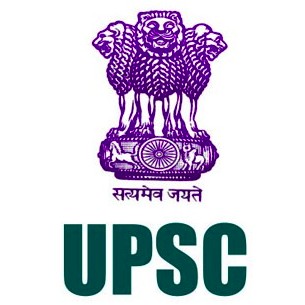
CSAT-02
Questions : 80 Questions
Time Limit : 120 Mins
Expiry Date : May 31, 2025, midnight
Online Test
15 Feb 2025

CAMP-CSAT-01
Questions : 40 Questions
Time Limit : 0 Mins
Expiry Date : May 31, 2025, 11:59 p.m.
Current Affairs
Feb. 14, 2025
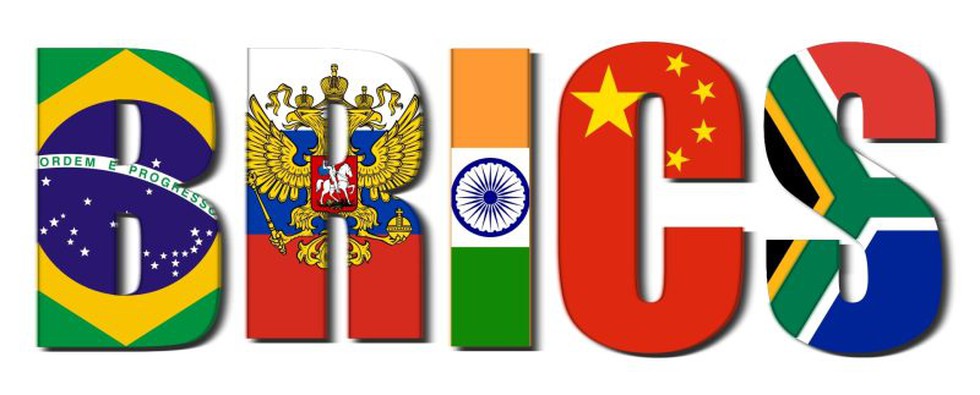
About BRICS Grouping:
- BRICS is an acronym for Brazil, Russia, India, China, and South Africa, a bloc of countries that formed a partnership following the creation of the term in 2001 by Goldman Sachs economist Jim O'Neill (but it didn't include South Africa at the time).
- South Africa joined in 2010, making it "BRICS".
- Representatives of the BRIC countries first began meeting informally during the 2006 meeting of the United Nations General Assembly.
- The group was designed to bring together the world's most important developing countries to challenge the political and economic power of the wealthier nations of North America and Western Europe.
- It is an attempt to form a geopolitical bloc capable of counterbalancing the influence of Western-dominated global institutions such as the International Monetary Fund (IMF) and the World Bank.
- The BRICS countries operate as an organization that seeks to further economic cooperation amongst member nations and increase their economic and political standing in the world.
- New Members:
- Saudi Arabia, Iran, Ethiopia, the United Arab Emirates, and Egypt joined BRICS in 2024.
- Indonesia joined the bloc as a full member on January 6, 2025.
- The expanded group has a combined population of about 3.5 billion, or 45% of the world's inhabitants.
- Combined, members' economies are worth more than $28.5tn - about 28% of the global economy.
- With Iran, Saudi Arabia, and UAE as members, BRICS countries produce about 44% of the world's crude oil.
Current Affairs
Feb. 14, 2025

About Black Seadevil Fish:
- The Black Seadevil Fish, also known as abyssal or humpback anglerfish, is a deep-sea fish known for its terrifying appearance and unique hunting adaptations.
- Scientific Name: Melanocetus johnsonii
- It is referred to as the black devil due to its dark colours, sinister-looking sharp teeth, and monstrous shape.
- Habitat: It is found in the deep ocean, often at depths exceeding 2,000 meters (6,600 feet). It prefers total darkness and high-pressure environments.
- Features:
- It has a huge head, glassy fangs, and a body that can stretch to contain prey larger than the fish
- It lures other fish towards it with a “fishing rod” with a luminous lure on its nose.
- It has a gelatinous body, which helps it survive under extreme pressure.
- Conservation Status:
- IUCN Red List: Least Concern








